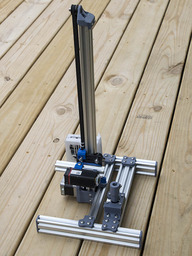Dedicated Compact Rotary Axis Laser Engraver
Discussion in 'Laser Cutters' started by David Bunch, Jan 31, 2022.
Dedicated Compact Rotary Axis Laser Engraver
Discussion in 'Laser Cutters' started by David Bunch, Jan 31, 2022.
Compact Dedicated Rotary Axis Laser Engraver
Page 1 of 3
Page 1 of 3

